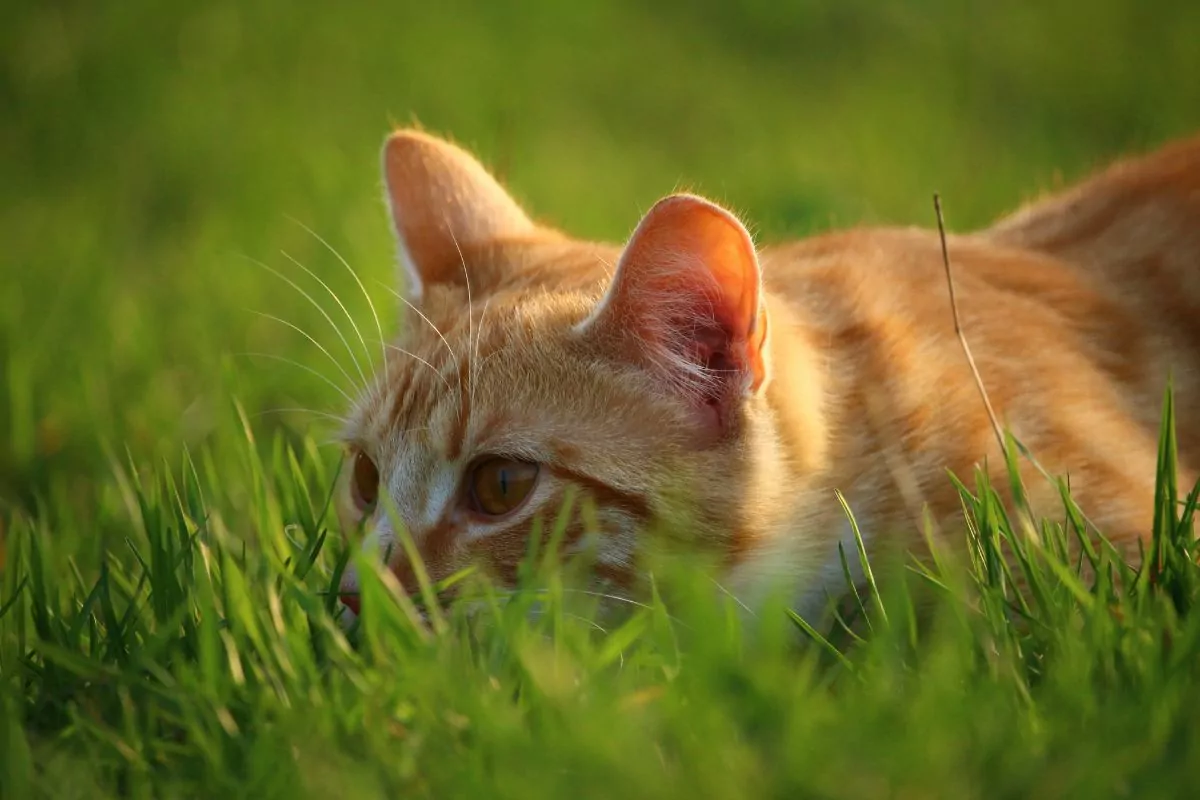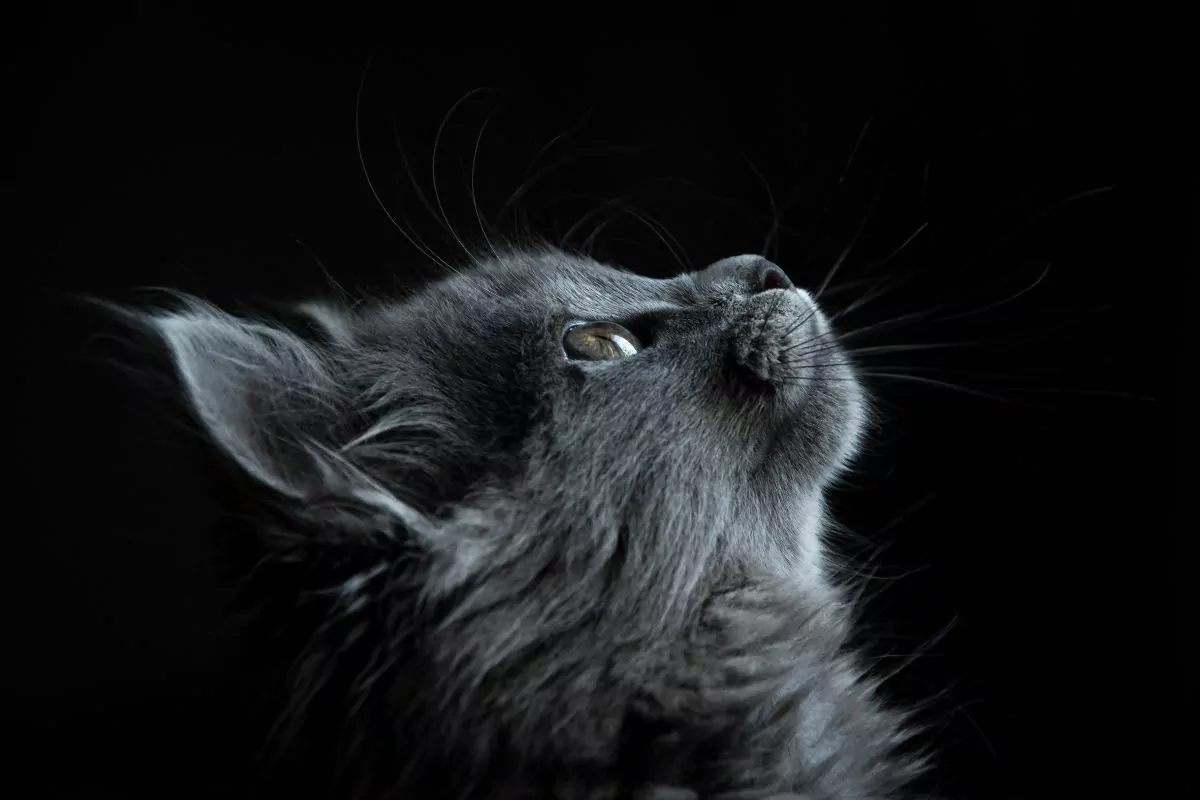Giardiasis is a disease caused by an intestinal parasite called Giardia. Giardia in cats is a globally distributed problem.
Although most owners are unaware, it is a parasite that often appears in felines. Other animals and even humans get infected by cats.
Several factors make this disease so difficult to control or eradicate. This article explains giardiasis in cats, including transmission, symptoms, treatments, and preventive measures.

What is Giardia in Cats?
It is a microscopic unicellular protozoan called Giardia duodenalis.
This parasite lodges in the small intestine of the cat. As a result, the animal’s organism cannot absorb food. The most affected nutrients are fats, carbohydrates, and some vitamins.
The Giardia organism has two forms throughout its life:
- A fragile and mobile state known as a trophozoite attaches to the intestinal wall to feed
- A cystic form with a cell wall resistant to the environment
The trophozoite transforms into a cyst in the cat’s large intestine. The carrier cat’s stool contains these infecting cysts.
How Do Felines Contract Giardia?
So, the following question would be: How do cats get Giardia?
The route of transmission is “fecal-oral.” This means that the cat must ingest cysts of Giardia to become infected.
Sources of contagion can be:
- Drinking contaminated water
- Eating food that has had contact with infected feces
- Cleaning its genital area with the presence of cysts and also
- Transmission from mother to kittens through licking is possible
Elimination of infected cysts takes two weeks from the time of ingestion.
Symptoms of Feline Giardia
The cat’s immune system plays a very important role in developing this disease.
Most indoor healthy adult cats are “asymptomatic.” So, at some point, they may have ingested the infective form, and the parasite could be present in their gut. Although they have no clinical signs of the disease, they do spread cysts with their feces. They are passive transmitters of giardiasis.
Clinical manifestations are frequent in:
- Cats suffering immunosuppressive diseases: Feline Immunodeficiency Virus (VIF) – Feline Leukemia Virus (VILeF)
- Cats living in overcrowded and/or unhealthy environments
- Abandoned kittens in poor general condition
- Very old cats
Giardia in cats symptoms are:
- Greenish, chronic, intermittent, foul-smelling diarrhea, often with mucus and blood
- Flatulence
- Intestinal pain and rumbling
- Weight loss
- Dehydration
- Vomiting
- Weakness
- Anorexia
How Vets Diagnose Giardia in Cats
The veterinarian will need the clinical history and symptoms description from the owner. Then, the vet will perform a complete physical examination of the patient and ask for a sample to analyze.
Giardia parasite in cats is an underdiagnosed disease. False-negative results often occur due to:
- Intermittent cyst elimination in feces
- Difficult identification in laboratory analyses
Thus, The Companion Animal Parasite Council (CAPC) recommends testing several stool samples from symptomatic patients by combining the following diagnostic methods:
- Direct smear microscopic observation
- Stool analysis in a trusted laboratory
- ELISA rapid test

Available Treatment Options
So, are you questioning whether Giardia goes away on its own in cats? The answer is no! This will give you clues about the treatments available.
Giardia in cat treatment is challenging for both the veterinarian and the owners. This is due to several characteristics and situations:
- As Giardia thrives in dirty and damp environments, cats that go outdoors can become infected
- Giardia cysts are resistant to the environment. That is why they can be infected for months under the right conditions
- Most healthy adult cats are asymptomatic carriers
- Cats are compulsive in their cleanliness, including their genital area. This behavior favors constant reinfestation
Hence, the elimination of this parasite needs curative plus preventive treatment. And a lot of patience!
To treat giardia in cats, Metronidazole was the drug used for animals with symptoms. But, it is only 50 to 60% effective against this disease. Besides, the presentation is usually in bitter-tasting oral tablets. So, its administration is a major problem generating excessive salivation in cats.
Fenbendazole is the drug of choice today. It is a broad-spectrum antiparasitic. Compared with Metronidazole, it has higher efficacy rates in killing Giardia. In consequence, it decreases the dissemination of cysts to the environment. All feline members of the household need to receive the treatment at the same time.
Administering medication to felines can be an almost impossible mission. Panacur ® for giardia in cats is the trade name of a tasty oral administration paste. Fenbendazole is the active drug of this product. It covers roundworms, flatworms, and giardiasis. It is a safe drug for kittens and pregnant and lactating cats. The administration is only once a day for two or three days.
In severe cases, the patient will also need a supportive treatment such as:
- Intravenous saline
- Antiemetics
- Prescription food for digestive problems in cats
- Vitamin supplements
- Probiotics, etc.
As part of the treatment as well, it will be necessary to:
- Collect the feces from the litter box as soon as possible while the animal is being treated
- Disinfect all the surfaces with diluted bleach and let them dry for 48 hours
- Clean cat food bowls, water bowls, toys, blankets, and bedding with boiling water
- Sanitize the cat’s genital area after it defecates during the treatment
- Trim the fur around the genital area if the cat has long-hair
The cost of giardia in cats treatment cost can range from a few dollars to a few hundred dollars.
Treating one animal is not expensive, but the cost increases when we talk about several cats. And will increase even further if hospitalization is necessary.
How to Get Rid of Giardia in Cats Naturally
We can use coconut oil for Giardia in cats as a natural preventative treatment. It promotes a healthy digestive system as it is antiparasitic. It also has antibacterial, antifungal, and antiviral properties. Besides, it stimulates the absorption of nutrients and avoids constipation problems. Reduces hair loss and, in consequence, the production of hairballs.
Most cats like the taste of coconut oil and lick it from a spoon. Another way to give it is by mixing it in their food. If they still refuse to drink it, rub a small amount on the fur of a paw, and the cat will wipe it off.
Offer a dosage of one teaspoon of coconut oil daily to get the desired effects. But the introduction to their feeding routine should be slow. The intestinal detoxification can cause general discomfort and diarrhea.
It is best to choose high-quality oil, such as the virgin or extra-virgin variety. Besides, made from 100% raw organic coconuts (to avoid the presence of pesticides).
When Feline Giardia is Left Untreated
Most indoor cats are asymptomatic. So, owners do not treat them for giardiasis.
Untreated giardia in healthy adult cats may not affect their health. But still, they spread the disease.
Fenbendazole is a dewormer used by veterinarians to treat roundworms and flatworms. It also controls the population of intestinal giardiasis.
The case is different for kittens in poor general conditions. As well as FIV or VILeF-positive, or geriatric felines. When they have the disease and do not receive treatment, they will deteriorate and die.
What are the Long-Term Effects?
The long-term effects we observe in cats are due to intermittent and chronic diarrhea:
- Swelling and abdominal pain
- Malabsorption problems
- Poor nutrition
- Weakness
- Weight loss
- Bacterial complications
Can Cats Transmit Giardia to Humans?
Giardia has different genotypes (i.e., a set of genes in the cell nucleus). People are susceptible to giardiasis genotypes A and B. And have a low susceptibility to E and F.
Giardia genotype F infects cats.
So, having explained this, we can now answer the big question: Does giardia in cats spread to humans?
Yes. But, the likelihood of this occurring is very low. The primary sources of infection in humans are water or food contaminated with dog or other human feces.
Giardia in dogs has genotypes C and D. An interesting fact is that dogs and cats do not infect each other.
How Long Does it Take to Cure Feline Giardia?
The treatment with Fenbendazole in cats lasts between two to three days only. Anyhow, the time will depend on the patient’s physical condition. And, on the owner’s commitment to follow the hygienic measures mentioned above.
The cat is free from giardiasis when the laboratory analyses of two consecutive fecal samples are negative.
The ELISA rapid test is not a good option for this purpose. It will yield positive results for a prolonged period, even if the animal is no longer sick.
Can Giardia in Cats be Prevented?
You can limit the giardia cycle in cats with the following hygiene measures:
- The veterinarian should check any cat with diarrhea
- Quarantine new feline household members
- Collect and dispose of the feces from the litter box as soon as possible
- Clean the cat’s genital area at least once a day with a wet wipe
- Keep the environment dry and avoid water stagnation
- General hygiene of the house and the objects belonging to the cats
- A good quality diet, low in carbohydrates and high in proteins
Recently, a Giardia vaccine for cats has become available in the USA. The benefits are the prevention of clinical signs and the reduction of cyst shedding. But there still isn’t enough evidence to determine its efficacy.

Key Takeaways
Let’s get to work! We have already shared all the myths and truths about giardiasis in cats. Let’s take action to prevent the spread of this parasite… For a life full of purrs and cuddles!!!!
